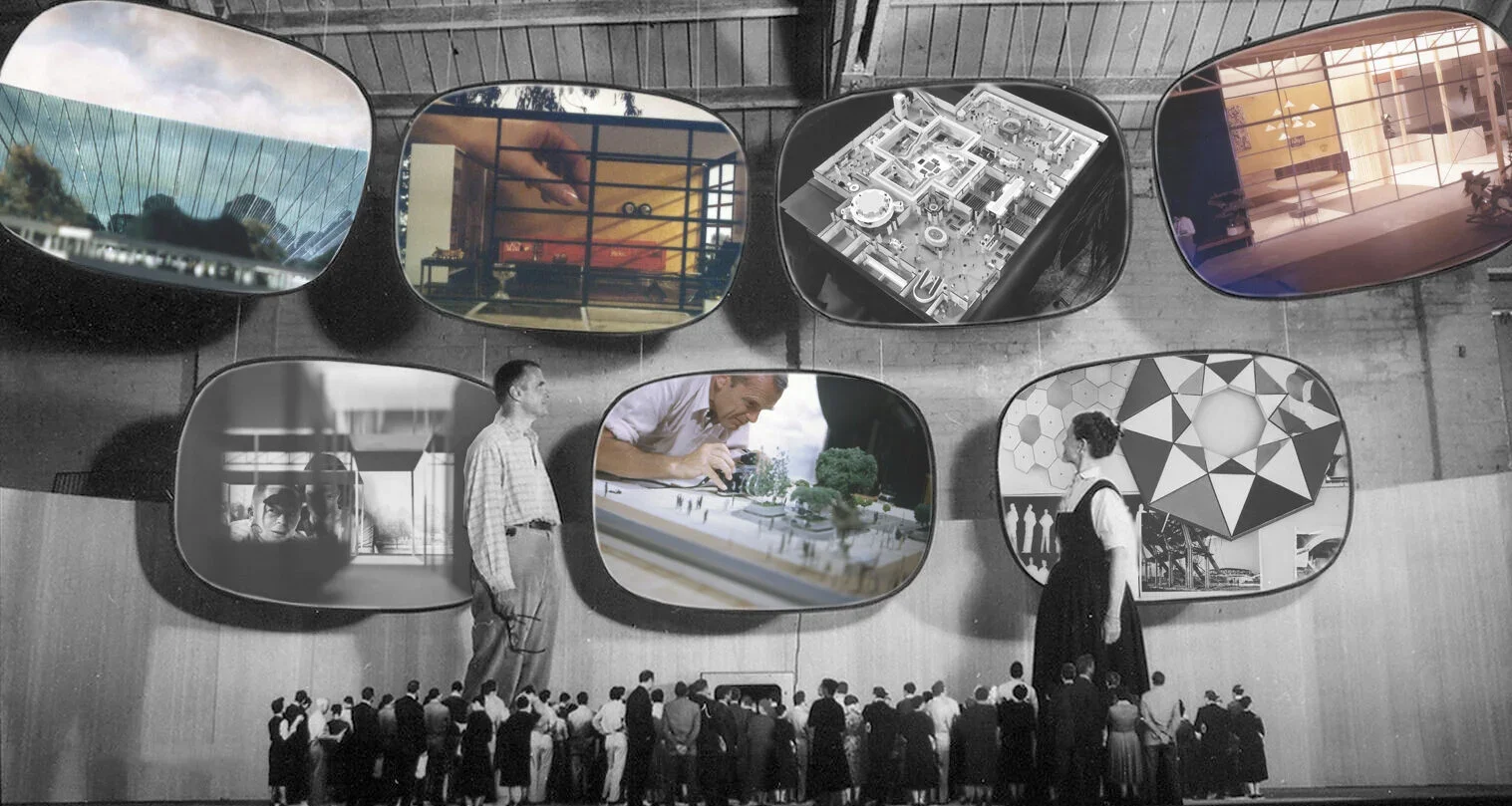Models: The Miniature Worlds that Charles and Ray Built
05.22.24 for Eames Office
For Charles and Ray Eames, models were as philosophical or scientific as they were diverse. They were generative, in ideas and in the building of human relationships. A model defined concepts of space and transformed a project through innumerable iterations; they offered a multi-layered experience comparable to the cavernous Eames Office in Venice, California. In both the Eames models and the office itself, there was a fine-tuned attention to detail, an exploration of knowledge, a collection of objects arranged to tell stories, and a spattering of people to make the experience come to life. The main difference being the obvious: scale.
“We think of ourselves as tradesmen,” Charles Eames said matter-of-factly during his lecture at the Smithsonian Institution in May 1977. “Mostly, a kind of custom trade. People come to us for things. And mostly, what they come to us for are models, in one sense or another: models before the fact or models after the fact.” Handwritten in the margins of his lecture notes, he defined the two scenarios. “Model before the fact: say an architect’s proposal, showing how something might be structured, if we chose. Model after the fact: say, a scientist’s model of a giant molecule, showing how something may be structured, according to the evidence.” Charles reformulated his description of model making: “By models, I mean ways of structuring certain problems.”
